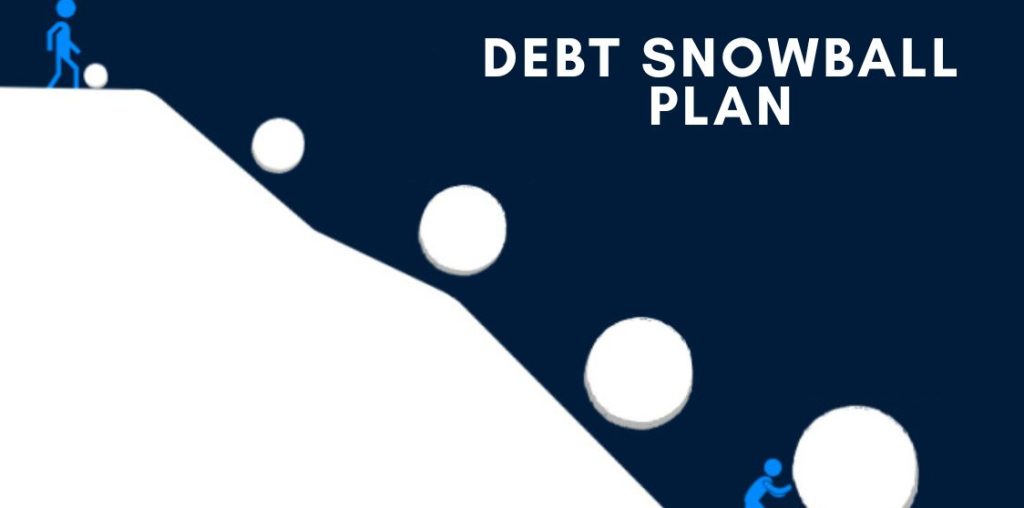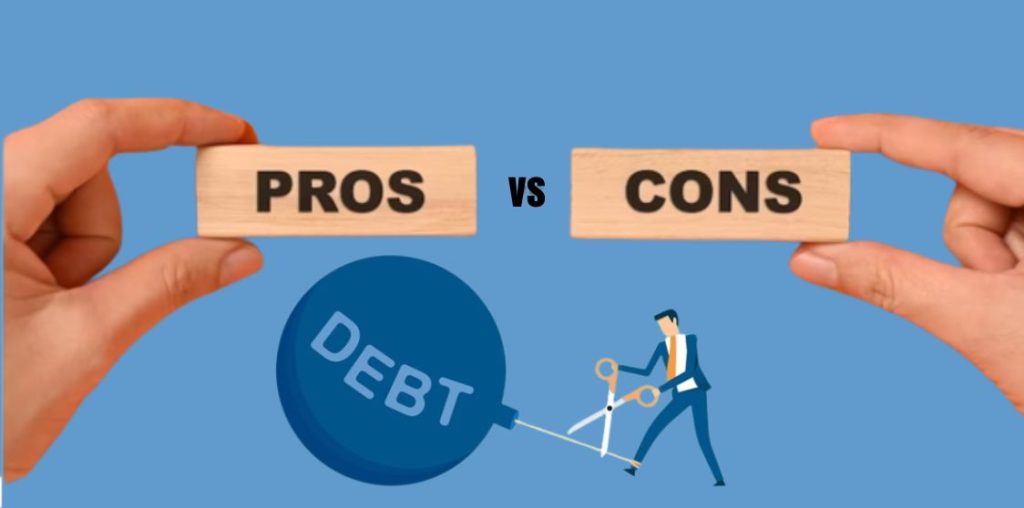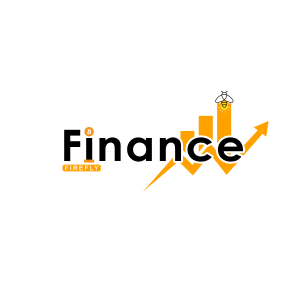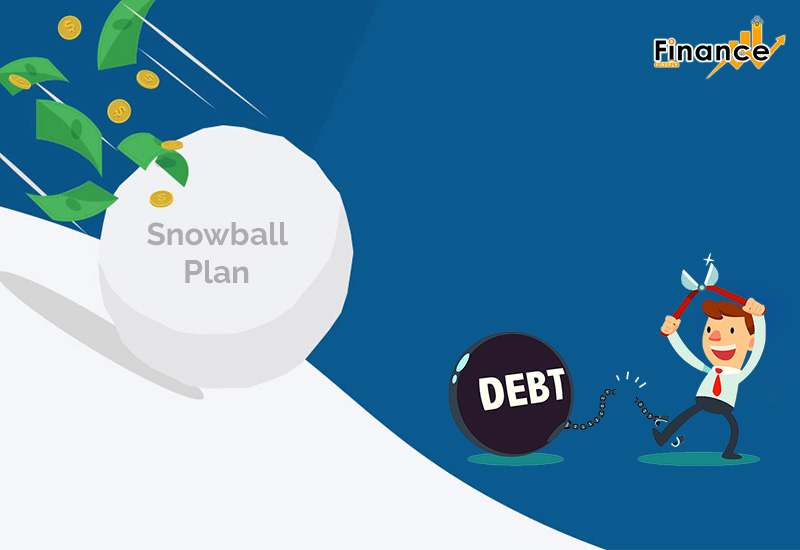Are you tired of your debt piling up every day across various credit cards? If yes, fret not as you can easily pay off debt through debt snowball plan. With the debt snowball plan, you start off with the smallest debts and work your way up to the largest ones. Through this strategic approach to pay off you reward yourself for the wins along your debt pay-off journey.
As you get rid of the smallest debt, you still have a little sigh of relief and motivation to roll the amount to pay off the next biggest one. The amount you pay off for the debt keeps growing just like a rolling snowball down the hill. With small victories cheering you up, you keep on eliminating the debts one by one. Let’s dig deeper into all the details of Debt snowball plan
Table of Contents
Debt Snowball Plan – Key Takeaways
- Debt snowball plan is the debt repayment strategy, popularized by the well-known personal finance author Dave Ramsey
- The debt snowball method involves paying off the smallest debt and then moving on to the next smallest and the loop carries on
- The psychological boost you have after paying off the smallest debt will get you out of the debt faster.
How to get started with the debt snowball plan?

To get started with the debt snowball plan, you have to follow the simple steps:
1. Gather your bills
It is important to comprehend your current financial situation and for this, you have to gather all the debt-related bills. Once you have an overall estimate of the minimum payments and remaining balances, you can analyze the situation quite better. It is important to note that the payments include credit card bills, student loans, medical bills, auto loans, and personal loans.
2. Create a debt snowball worksheet
Creating an excel sheet will help you quickly figure out which debt to pay off first. If you do not prefer an excel sheet you can create a debt snowball plan on a piece of paper.
On the sheet, list down your debt from the smallest to the largest and calculate the total amount of debt you owe to the creditors. The next step is creating two separate columns one for the maximum monthly payment and one for the exact amount you pay each month. Only with the exception of the smallest debt, the figure written in the current payment section should match the minimum monthly payment column. For the smallest debt, also include the additional amount you can pay each month on the top of the minimum amount.
Here’s the example in the form of table for you to understand it easily
| Type of debt | Total amount owed | Minimum monthly payment | Current Payment |
| Medical bill | $1500 | $50 | $50 + $100 additional payment |
| Credit card no 1 | $4000 | $160 | $160 |
| Credit card no 2 | $6000 | $240 | $240 |
| Car loan | $20,000 | $380 | $380 |
3. Pay down the debt
Use the worksheet to pay off the debt in an efficient manner. When you pay off the smallest debt cross it out and repeat the same process for the next debt. But no matter which of budgeting method you have opted for, you should make monthly payments on all the debts. It is recommended that don’t aggressively pay down the smallest debts so that you won’t have the motivation to proceed with further payments. Also, one missed payment can decrease your credit score by significant numbers.
How to pay off debt using the debt snowball plan?

Let’s consider a scenario in which you have four loans and credit card balances you have to pay off. Here’s how to approach the debt using the debt snowball plan :
- Set up the process of automatic payments on all your accounts with the minimum amount that is due.
- Thoroughly analyze your budget to know the extra cash flow that you put towards the debt every month.
- Make extra payment for the smallest balance first
- Once the smallest debt is paid off, make the additional payments for the next smallest balance you have
- After you have completely paid the second debt, take the full payment that includes the minimum amount and the additional amount from the first debt and simply add your payment to the next smallest balance.
- Once the third debt is paid off, you will add all the amount you were previously adding to pay the previous debts towards your final debt.
Important Note: If you are paying debt via the debt snowball plan, it is advisable to avoid adding more debt to them once you have completely paid off the balance to the creditor.
Debt Snowball Plan – Pros and Cons

Like all the other financial strategies, the debt snowball plan has both advantages and disadvantages.
Pros
- The greatest benefit is that you don’t have to pay to access the debt snowball method
- Paying off 5-6 debt with the help of debt snowball plan is manageable. You start with the smallest payment with low-interest charges and have the confidence to pay other payments with huge numbers.
- Like other multiple debt management plans, the debt snowball plan won’t cause the credit score to drop only if you make on-time monthly payments.
- Through this technique you can pay off the debt faster and save additional money in interest via the debt snowball plan .
Cons
- This technique is not a viable choice if you are on a tight budget. You must have extra money in your pocket to pay off the smallest debt quickly to use the debt snowball plan
- Through the debt snowball plan, you could end up paying more interest on the bigger debts over time. This can also extend the length of your debt repayment period.
- The debt snowball plan won’t reduce the number of bills you have to pay each month.
Is debt snowball the right technique for you?
The debt snowball plan is a gratification-driven approach to pay off debt. But the only one its right for you is to give this technique a try.
The debt snowball method is one of the effective approaches to get rid of debt. Although it may not save your money in the long run but gives you enough motivation to pay off debts.
Alternatives to Debt Snowball Plan
Everyone has the unique financial situation so if debt snowball plan does not fit your needs you can try the following methods:
- Debt Avalanche Method – This approach works the same way as the debt snowball plan and the only difference is that you start off by targeting the accounts with high interest rates. Through this technique, you can save money by getting rid of the high interest charges.
- Debt Consolidation– This technique involves paying off multiple debts with a single new loan or credit card payment. The benefits include simplified finances and lower interest rates.
Best ways to consolidate credit card debt
There are seven viable approaches to consolidate debt in an effective manner. But the top ones include personal consolidation loans and balance transfer credit cards to pay off debt.
- Credit counseling – If you are falling behind in paying off debt, then you may consider consulting to a credit counselor for personalized advice. The counsellor may suggest you a debt management plan and can negotiate with the creditors to charge low interest on the existing debts. Although it totally depends upon the credit to agree or disagree on the terms set by the counselor if it works you can create an affordable repayment plan. There are fees associated with the debt management plan, but if it works well it can save a lot of cost in the long run.
Frequently Asked Questions
Does debt snowball really work for all cases?
The debt snowball plan is all about getting the motivation to eliminate debt but it can cost you more time and money. Not for all the use cases but it is for sure one of the effective debt-relief options.
What debt should I consider for the debt snowball plan?
Except the mortgage loans, all the loans are considered in the debt snowball plan. Some of examples of non-mortgage loans are the following:
1.Student loans
2. Medical bills
3. Car loans
4. Credit card balances
5. Personal loans
6. Payday loans
7. Home equity loans









